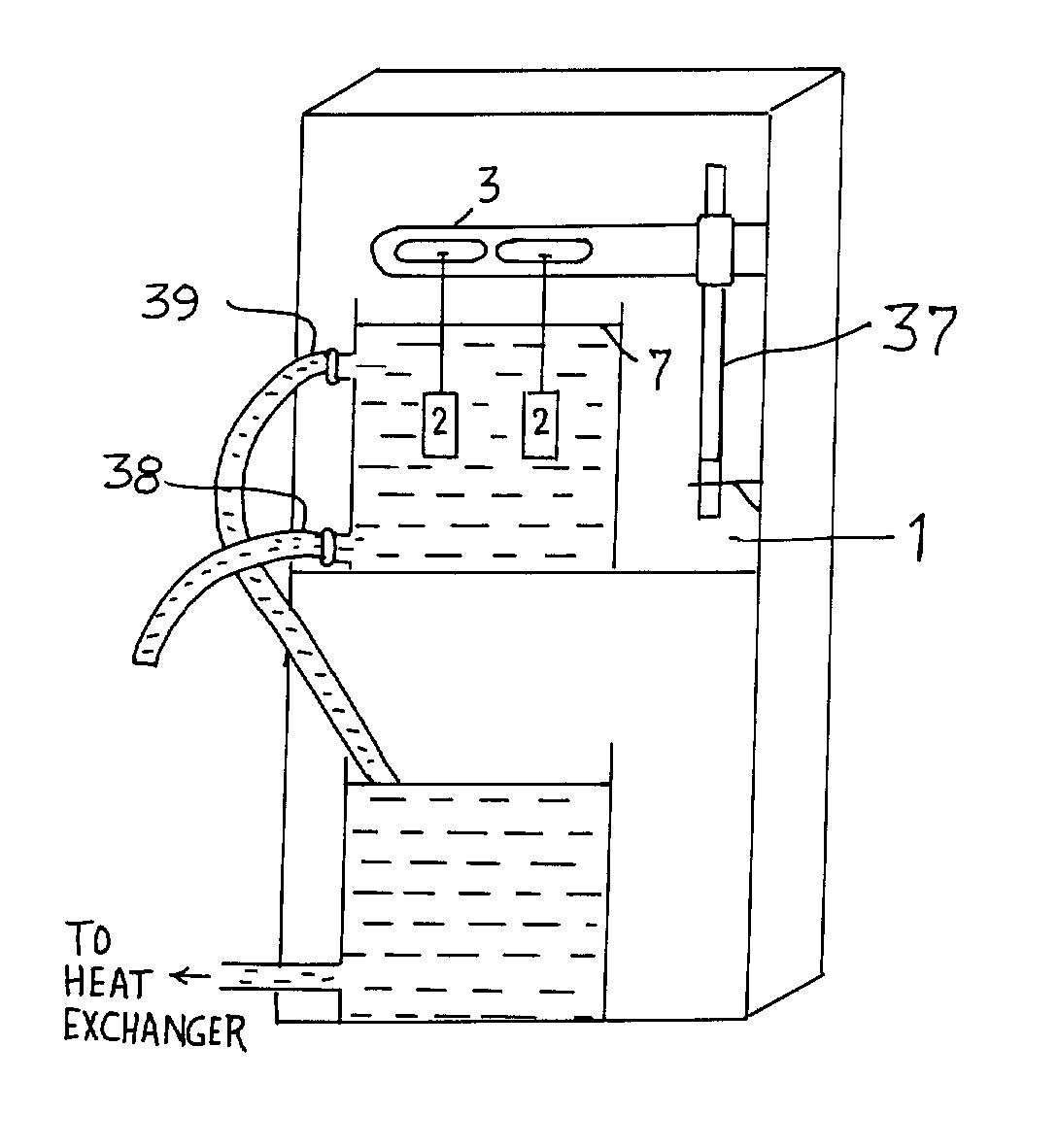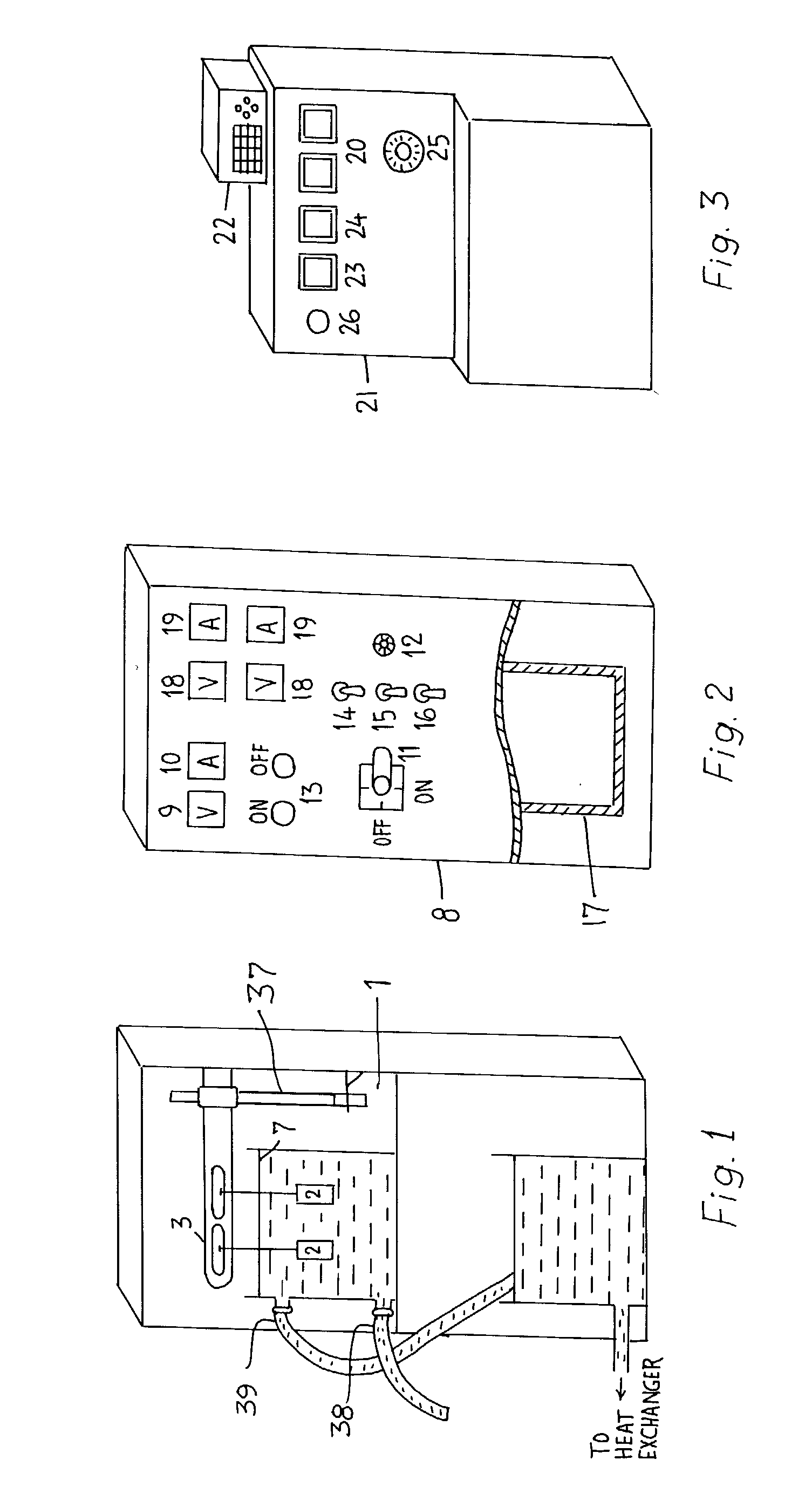Process for forming coatings on metallic bodies and an apparatus for carrying out the process
a technology of metallic bodies and coatings, applied in the direction of manufacturing tools, electric circuits, electric circuits, etc., can solve the problems of poor resistance to wear and tear, poor and inability to provide a high level of protection against wear and tear and corrosion, so as to save the cost of machining or grinding required to remove the external porous layer
- Summary
- Abstract
- Description
- Claims
- Application Information
AI Technical Summary
Benefits of technology
Problems solved by technology
Method used
Image
Examples
example 1
[0046] Two aluminium 7075 alloy specimens of 10.times.15.times.20 mm dimension are connected to the output of the high voltage transformer. The total surface area of each sample is 13 cm.sup.2. The current density selected based on a single sample is 0.3 A / cm.sup.2. Electrolyte containing 4 grams of potassium hydroxide and 2 grams of sodium tetra silicate per liter of de-ionized water. Electrolyte is allowed to circulate through the reaction chamber throughout the process. Electrolyte temperature is maintained between 4-6 degree C. In order to exercise better control over the kinetics of the coating process, current density is maintained constant throughout the experiment. Voltage increased up to a maximum of 450 V by the end of 60 minute test run time. At the end of 1 hour, electrical power was switched off, samples were taken out, cleaned in fresh running water and dried with warm air. The average coating thickness of the ceramic composite coating formed is measured to be 95 micro...
example 2
[0047] Two aluminium 7075 alloy specimens of 75.times.25.times.15 mm dimension are immersed in a continuously circulating electrolyte having 3 grams of potassium hydroxide and 1.5 grams of sodium tetra silicate per liter of de-ionised water. The total surface area of each sample is 67.5 cm.sup.2. The current density selected based on a single sample is 0.25 A / cm.sup.2, maintained constant throughout the process. Electrical power supply is continuously fed to the samples for a period of 70 minutes, final voltage at the end of the process has reached to 600 V. The average coating thickness and the microhardness measured are 85 microns and 1755 Hv.sub.0.2 respectively. Coating is found to exhibit a fully dense layer withy very good adhesion to the substrate. These samples are subjected to dry sand abrasion test as per ASTM G65 standard. Steady state abrasive wear loss is measured to be 45 times lower than the uncoated 7075 alloy. This is clearly illustrating the fact that the ceramic c...
PUM
| Property | Measurement | Unit |
|---|---|---|
| electric potential | aaaaa | aaaaa |
| current densities | aaaaa | aaaaa |
| current densities | aaaaa | aaaaa |
Abstract
Description
Claims
Application Information
 Login to View More
Login to View More - R&D
- Intellectual Property
- Life Sciences
- Materials
- Tech Scout
- Unparalleled Data Quality
- Higher Quality Content
- 60% Fewer Hallucinations
Browse by: Latest US Patents, China's latest patents, Technical Efficacy Thesaurus, Application Domain, Technology Topic, Popular Technical Reports.
© 2025 PatSnap. All rights reserved.Legal|Privacy policy|Modern Slavery Act Transparency Statement|Sitemap|About US| Contact US: help@patsnap.com



